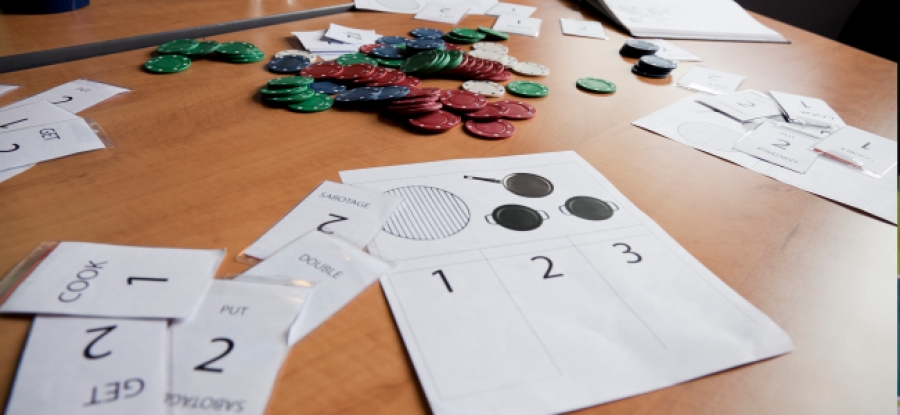Beyond shopping, gamification is now nearly synonymous with fitness tracking devices. Wearable fitness devices can track a user’s steps and heart rate. Badges are usually awarded for milestones. What’s more, fitness trackers also have social media plug-ins, thus generating a spirit of competitive fun with friends.
Gamification to a game designer has, of course, different connotations. Badges and leaderboards are just a part of a game’s interconnected system. Stripping out parts of a whole and then adding them to online shopping portals or wearable device applications does not turn everyone’s online world into a game. Trappings of gamification can occur when it is the focal point of an activity. In other words, gamification mechanics should be in the background, enhancing game-like activities.
"Simply design your character, type in the text you want it to say, and then press play."
Tracking your own progress with such devices should be a journey, not just a series of rewards. Similarly, gamification in education should be used as a tool to help deliver personalised learning. For example, Khan Academy gives each learner his or her own dashboard to track the badges unlocked for each instructional video viewed.
Gamification mechanics can include more than points and badges. In my practice, I have students create talking digital avatars Voki Classroom. Voki is intuitive and easy to use. Simply design and customise your character, type in the text you want it to say (or record your voice), and then press play. Voki avatars are game-like and can be an effective presentation tool. The final result can be easily embedded on a website or blog.
Other engaging gamification mechanics for the classroom include Easter eggs, which are hidden items left for students to find. When I use Easter eggs, I acknowledge my student’s discovery with a digital badge.
Platforms for Educational Gamification
Edmodo is a popular learning management tool. It can also be used as a platform for a gamified classroom. Students and teachers (there is a large professional development community on Edmodo) can upload their own avatar images and interact with others in a virtual classroom. Edmodo is private and secure, too. It has the look and feel of Facebook. Social interactions can be monitored or frozen to ‘read-only’ by the teacher. I use the ‘small group’ feature, which enables students to work cooperatively, while I monitor. Badges can be given on Edmodo, too. The Help page features resources, including student and parent letters that review terms of digital citizenship.
3D GameLab goes even further as a fully-gamified platform. Aside from badges and leaderboards, 3D GameLab offers a “quest” structure. The learning, in this case, is the journey. Students have options to fulfill different quests, which level up in challenge.
Another example of game-like learning platform is ClassCraft, which takes the model of the multiplayer online game World of Warcraft, and uses it to deliver instruction. Each student earns experience points (XP) from assigned learning activities. In turn, the teacher has a dashboard to manage the analytics of the virtual classroom (3D GameLab has analytics, too.) The class plays in teams that include guilds of warriors, mages (wizards) and healers. As a result, ClassCraft turns the gamified classroom into a role-playing game.
The key is to gamification in education is to be sure it’s a tool to enhance the learning journey. It should never be the goal of a gamified classroom to collect badges. When properly integrated, learning can be enhanced and fun. Using a platform, like Edmodo, 3D GameLab, or ClassCraft, can round out the experience, enabling students to work in teams, all while taking ownership of their own learning.
Do you ever gamify your lessons? Share your experiences below.


















